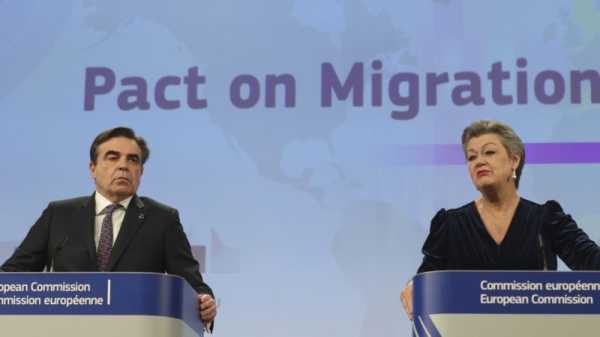
The new Pact on Migration and Asylum will not only violate human rights, but will also prove to be ineffective for the goals it has been conceived for, writes Gaia Romeo.
Gaia Romeo is a Vrije Universiteit Brussel researcher who launched an open letter against the introduction of mandatory border procedures signed by 250 migration experts from almost 100 universities.
On 14 February, Civil Liberties, Justice and Home Affairs (LIBE) Committee of the European
Parliament adopted the new Pact on Migration and Asylum, a comprehensive package that reshapes the EU legislation on asylum.
The EU has been struggling to reform its asylum system since 2015 when the so-called “refugee crisis” showed the limits of the EU approach at a time of particularly high inflows.
After four years of negotiations, the forthcoming ratification of the new Pact has been saluted by EU policymakers as a historical step that will ensure that migration is managed fairly and efficiently, and in solidarity among all EU countries.
The main innovations of the Pact are two: the introduction of mandatory border procedures and the establishment of a flexible “solidarity” system among EU member states.
In practice, asylum seekers coming from countries with a low asylum recognition rate would have their claims processed very quickly at the borders, on small islands or in de facto detention facilities, by frontline states.
The exact number of asylum seekers to be processed at borders by each country will be calculated on a formula based on the number of irregular entries and refusal of entries for the past three years.
The other member states would contribute to the efforts of first-line countries by choosing between refugee resettlement and financial and operational support.
As a last option, they could contribute to funding relevant projects in third countries – namely contributing to the externalisation of protection duties, which is a very doubtful form of solidarity.
There are several good reasons to oppose the Pact, and the first and foremost is that the introduction of mandatory border procedures will most certainly lead to widespread violations of the rights of asylum seekers, as repeatedly denounced by human rights defenders.
But if this does not seem enough, there is another one: the system foreseen by the Pact will simply not meet any of the goals of effectiveness and shared responsibility for which it has been conceived.
And this is not an idealistic stance but a very science-grounded opinion of 250 EU migration and asylum policy experts from almost 100 universities who signed this open letter that I launched with a group of colleagues from the Brussels Interdisciplinary Research Centre on Migration and Minorities (BIRMM).
In the letter, we argue that mandatory border procedures will not work, because none of the assumptions on which their smooth functioning is based have proved to be true, as years – if not decades – of studies on border procedures unmistakably taught us.
The idea behind border procedures is in fact that asylum applications can be processed very fast: Those who have their claims accepted can enter the EU territory, and those who are rejected can be swiftly returned to their country of origin or to a third country of transit.
But in the real world, decisions on asylum applications can take several months, and the EU-wide return rate has dramatically dropped, under 20% in the post-COVID era, for a series of reasons spanning from the scarce cooperation of third countries to the human rights guarantees that luckily still prevent deportations to be carried out too fast.
This was clearly shown by the implementation of the fast-track border procedures in the context of the EU-Turkey statement of 2016, which led to a humanitarian disaster, with refugees imprisoned for years on the islands and a miserable total of 2,054 readmissions to Turkey.
If this was a general testing of border procedures before launching them on a larger scale, the result speaks for itself.
The third assumption on which the system is based is that the flexible “solidarity” mechanism would relieve border states from the responsibility of being the EU’s gatekeepers.
However, all the past solidarity mechanisms – the voluntary as much as the compulsory ones – among EU member states have sadly failed in truly sharing the responsibility of protecting asylum seekers across the EU.
It is not clear why the new system should work, especially in the absence of an accountability mechanism for those member states failing their duties.
And finally, the last assumption – more or less overtly acknowledged – is that the very
existence of border procedures would discourage potential (bogus) asylum seekers from
undertaking the migratory journey.
But EU countries have been adopting more and more restrictive asylum measures in the last 30 years, including border procedures, and no significant deterring effect has been observed so far.
Subscribe to our EU 2024 Elections newsletter
Email Address * Politics Newsletters
Source: euractiv.com



